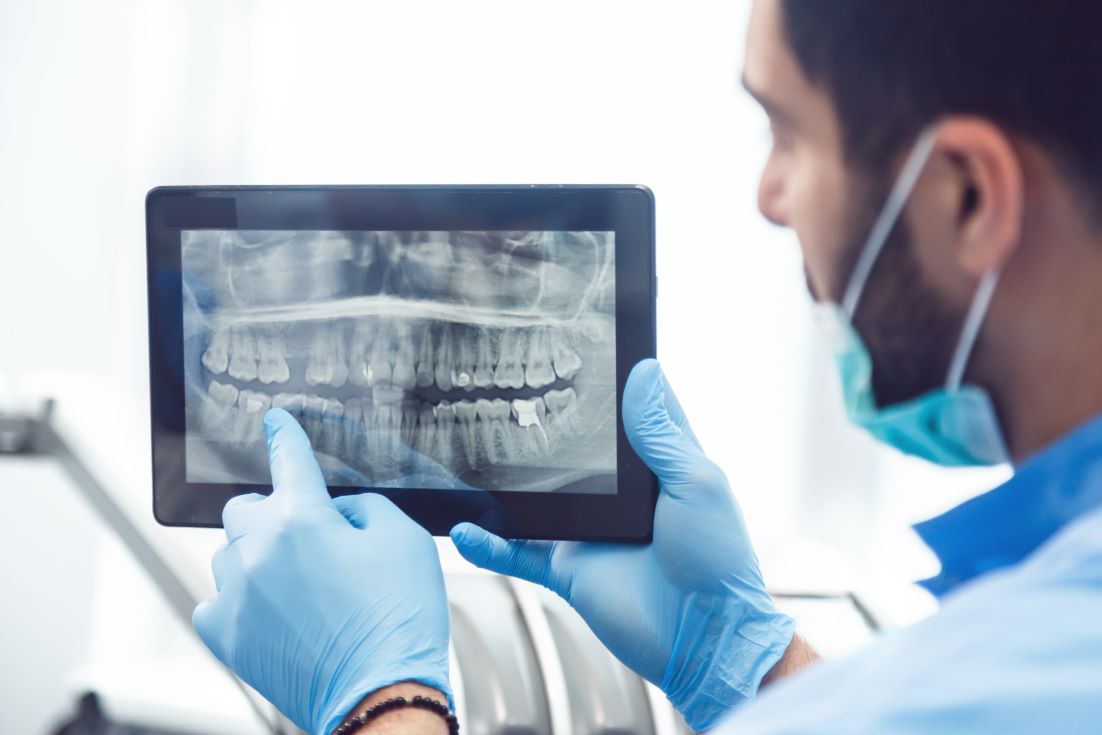
You brush your teeth twice a day, floss regularly, and schedule dental cleanings every six months, so do you really need a new set of dental X-rays every year? Maybe. Like all things health-related, the answer depends on your personal health history and your dentist’s specific concerns.
Why do I need dental X-rays?
Just as X-rays on other parts of your body allow doctors to identify damage beneath the surface, dental X-rays provide your dentist with important information that can’t be obtained with a simple oral exam. For example, X-rays allow your dentist to see between the teeth and underneath fillings to identify early signs of decay and damage and take action before issues progress.
Often, cavities don’t appear in the visual exam until they’ve reached an advanced stage and size. X-rays provide a better look into the inside and overall health of the tooth by capturing all three layers of tooth structure (enamel, dentin, and pulp chamber). In cases of decay, these images allow your dentist to determine the best treatment option for the stage of the cavity.
For example, when a cavity is still in the enamel layer, it progresses slowly. However, when decay reaches a tooth’s dentin, it will progress more quickly. Even if a cavity doesn’t infect the pulp (i.e., the inner portion of the tooth containing nerves), the tooth can become inflamed, causing pulpitis and requiring a root canal. With X-rays, decay can be detected and treated before it spreads to other areas of the tooth and causes further damage.
By treating decay early, we can prevent further weakening of the tooth structure and avoid more invasive and expensive treatments. In our experience, patients would rather opt for a simple filling to treat early decay over a root canal and crown. It’s also important to point out that, in some instances, cavities can progress quickly, sometimes changing significantly within 12 months. Annual X-rays help monitor the health of your mouth to ensure prevention and early intervention are possible.
Beyond tooth decay, dentists also use X-rays to detect bone loss from periodontal disease, signs of issues in the root of the tooth, infection or death of the nerves, cysts, oral cancer, or changes caused by disease of the body.
Therapeutic vs. Diagnostic X-rays
Depending on the type of information your dentist needs, they will either request therapeutic or diagnostic X-rays. Therapeutic X-rays give your dentist a holistic view of your teeth and mouth, so they can look for potential signs of oral health issues that may require further examination. This is the type of X-ray usually taken during a standard dental exam.
Diagnostic x-rays are a bit different. These are usually required when more in-depth treatment is planned. For example, if you are having a root canal, dental implant or other dental work, you’ll likely need a diagnostic X-ray. This type of X-ray provides a comprehensive image of the entire tooth from the crown to the root.
How safe are dental X-rays?
In the past, there have been some concerns around the safety of X-rays due to exposure to radiation. However, as technology has developed, radiation exposure has been lowered significantly. Given the introduction of digital X-rays and the small amount of radiation exposure, the risk is virtually nonexistent.
Contact Our Office
In the end, we tailor the need for X-rays to each patient. Your frequency of X-rays is based on your oral hygiene habits, previous history of tooth decay, and risk for developing future decay. If you have questions about your X-ray history or want to schedule a visit, please get in touch with our team.

